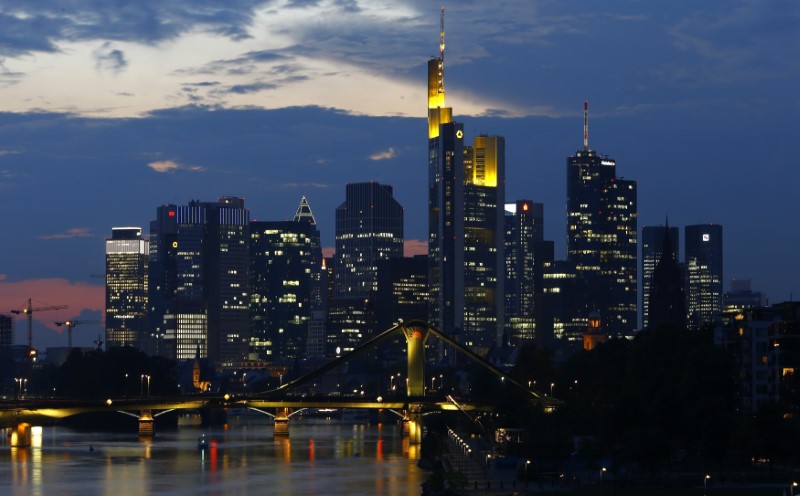By Francesco Guarascio and Philip Blenkinsop
BRUSSELS (Reuters) - The euro zone economy started the year with robust growth that outstripped that of the United States and set the stage for a strong 2017, preliminary estimates showed on Wednesday.
The improving economy may weaken the euroskeptic parties that have gained ground in several European Union states over the past years, many of which have denounced the poor state of their economies and called for ditching the euro and returning to national currencies.
The gross domestic product of the 19-country euro zone bloc grew by 0.5 percent on the quarter in the first quarter, which translates to annualized growth of 1.8 percent in all of 2017, the European statistics agency Eurostat said.
The preliminary euro zone figure is much higher than the 0.7 percent annualized growth recorded in the United States in the same quarter, the weakest performance since the first quarter of 2014, according to U.S. estimates.
The weaker performance of the U.S. economy was a blow for the administration of Donald Trump, who has promised strong growth with a protectionist agenda.
The contrasting data from the U.S. and the euro zone may weaken the French presidential candidate Marine Le Pen, who is calling for tariff barriers to protect the French economy. She faces free-trade supporter Emmanuel Macron in a May 7 runoff, which polls show Macron is likely to win.
In a further sign of a healthier recovery of the euro zone, Eurostat raised to 0.5 percent from 0.4 percent its figures on growth in the fourth quarter of 2016. The year-on-year estimate for the last quarter was also revised up, to 1.8 percent from the previous 1.7 percent.
Political risks, however, still represent a possible drag on euro zone growth.
"The economy is proving to be resilient to uncertainty both abroad and at home. Bar a surprise at the French elections on Sunday, euro zone growth is set for a strong 2017," warned Bert Colijn, senior economist at ING.
Euroskeptic parties are also on the rise in Italy, the euro zone's third-largest economy, which may hold general elections in the coming months. No date is set, but they would come no later than next May.
Eurostat did not break down the components of the GDP growth, but economists expected it was led mostly by domestic consumption and business investment.
Weaker domestic demand might reduce the pace of the expansion in the coming quarters as consumer prices rise.
"There remains the possibility that growth could be hampered by consumers being more reluctant to spend as their purchasing power is squeezed by overall higher inflation and limited wage growth in most countries," Howard Archer, chief European economist at IHS Markit said.
First estimates released in April show inflation in the 19-country currency bloc was 1.9 percent year-on-year in April, up from 1.5 percent in March and just short of the four-year high of 2.0 percent recorded in February.
But euro zone inflation figures continue to fluctuate. Data on industrial producer prices, also released by Eurostat on Wednesday, showed a marked slowdown in March.
Producer prices fell 0.3 percent in March and year-on-year growth slowed to 3.9 percent from February's 4.5 percent, which was the highest in more than five years.

"It seems that the slowdown in producer price inflation largely reflected energy effects, which should continue to bear down on producer and consumer price inflation over the rest of the year," said Jack Allen, European economist at Capital Economics, noting that the ambivalent figures are likely to leave the European Central Bank's stimulus program unchanged this year.